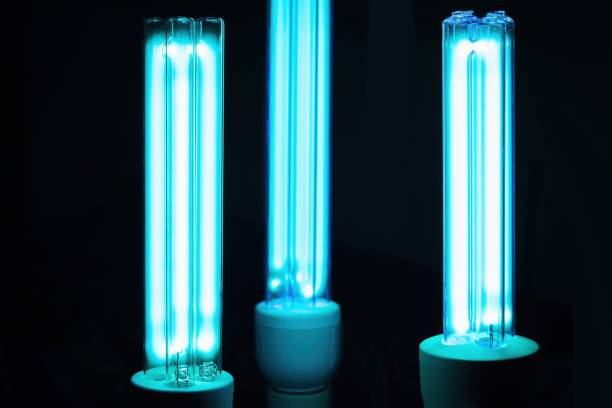What are UV Lamps?
UV or ultraviolet lamps are electronic devices that emit ultraviolet light in the non-visible UV spectrum. UV light occupies the spectrum between X-rays and visible light. The main types of UV lamps include mercury vapor, xenon, and LED UV lamps.
Mercury Vapor Lamps
One of the earliest and most common types of UV lamps is the low pressure mercury vapor lamp. These lamps contain mercury vapor inside a quartz glass tube. An electric current is passed through the tube to produce electromagnetic excitations within the mercury atoms. This excitation causes the mercury atoms to emit UV light along with small amounts of visible blue and green light. Mercury vapor lamps are available in blacklight or germicidal varieties that emit longer wavelength UVA or shorter wavelength UVC respectively.
Advantages of mercury vapor lamps include high output, long lasting, and affordable. However, they also contain toxic mercury that requires special disposal and can emit small amounts of harmful visible light. More modern replacements like LEDs address some of these issues.
Xenon Flash Lamps
Xenon flash lamps generate extremely brief and intense bursts of full spectrum UV, visible, and infrared radiation. They function similarly to mercury lamps but utilize an inert xenon gas filling. UV Lamps Applications include photography flashes, lithography, artificial sunlamps, and UV curing.
The main advantage of xenon flash lamps is their ability to produce an extremely bright high intensity flash in an exceedingly short duration often measured in microseconds. However, they also require more complex triggering electronics and high operating voltages compared to mercury lamps.
LED UV Lamps
More recently, LED or light emitting diode based UV lamps have emerged as environmentally friendly replacements. LED UV lamps utilize novel semiconductor materials like aluminum gallium nitride (AlGaN) to directly convert electrical current into targeted UV wavelengths without containing mercury or gases.
Key advantages of LED UV lamps include energy efficiency, directional beams, instant on/off, long operational lifespan, stability, controllable intensity, and absence of toxic materials. They come in UVA, UVA-blue, and UVC varieties optimized for applications like disinfection, fluorescence, and photocuring. LED technology also enables the creation of thinner and more compact UV sources.
Major Applications of UV Lamps
UV lamps find widespread use due to unique properties of UV radiation. Here are some of the main applications:
Disinfection and Sterilization
UVC wavelengths in the 200-280nm range are highly effective at destroying DNA and RNA of microbes like bacteria and viruses. For this reason, low pressure mercury lamps emitting UVC are commonly used for water treatment and sterilization in hospitals. Newer LED UV lamps also show promise for room disinfection.
Fluorescence and Spectroscopy
When certain materials are exposed to long or short wavelength UV radiation, they re-emit the absorbed energy as visible fluorescence. Instrumentation exploiting this phenomenon includes fluorescent microscopy, UV–visible spectroscopy, and chromatography detectors. UV lights are critical components enabling these analytical techniques.
Photocuring and Photoinitiation
Short wavelength UVA can trigger chemical reactions upon exposure of photoinitiators and photopolymers. This photocuring process forms the basis of applications like UV inkjet printing, 3D resin printing, and UV glues/coatings. LED UV curing provides precision localized curing with minimal heat generation.
Tanning and Pigmentation
Exposure to UVA radiation in sunlight and tanning beds results in the browning of skin called melanogenesis. This happens due to production of melanin pigments in response to UV triggered oxidation reactions within skin cells. Controlled exposure along with sunscreen use maintains healthy skin and prevents sun damage.
Forensics and Security
Long wave UV lamps are employed for security applications to detect hidden markings and for forensic analysis. Counterfeit banknotes, currency, and documents often contain inks or dyes that fluoresce under UV illumination. Latent fingerprints left at crime scenes may also show up under longwave UV inspection.
As seen from the wide range of applications, UV lamps constitute an important component with diverse functionality with fields as varied as lighting, healthcare, manufacturing, and security. Through ongoing developments, the technology provides sustainable solutions compared to traditional mercury vapor lamps of the past. Improved energy efficiency and environmental performance of LED UV sources expands their adoption and benefit to modern life.
*Note:
1. Source: Coherent Market Insights, Public sources, Desk research
2. We have leveraged AI tools to mine information and compile it

